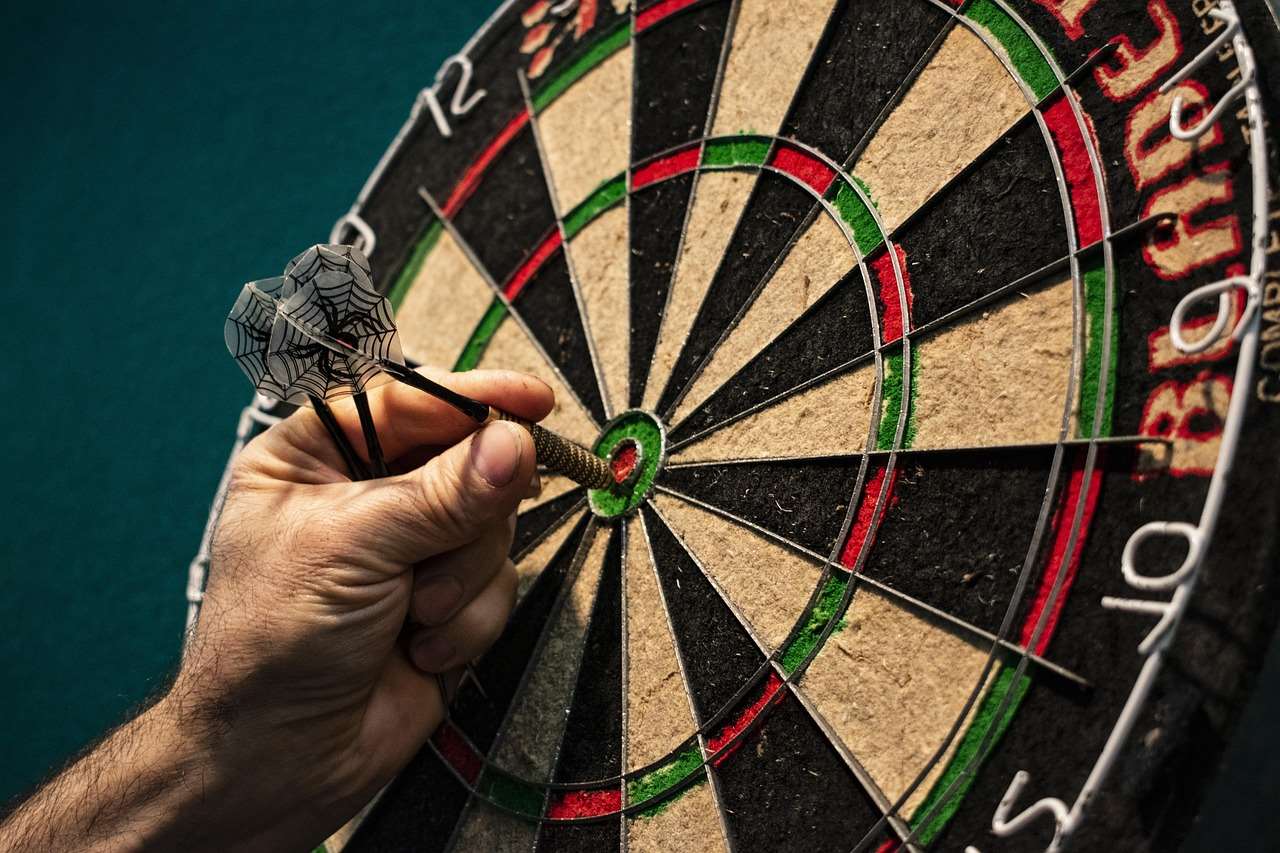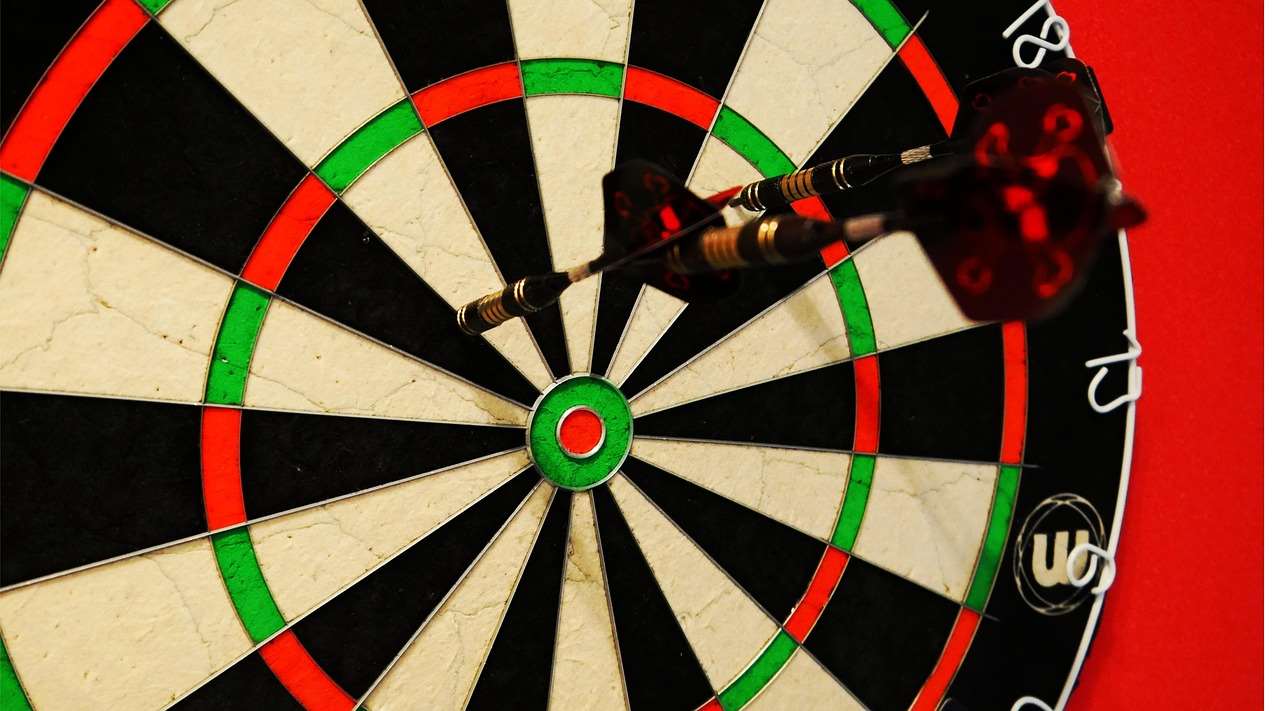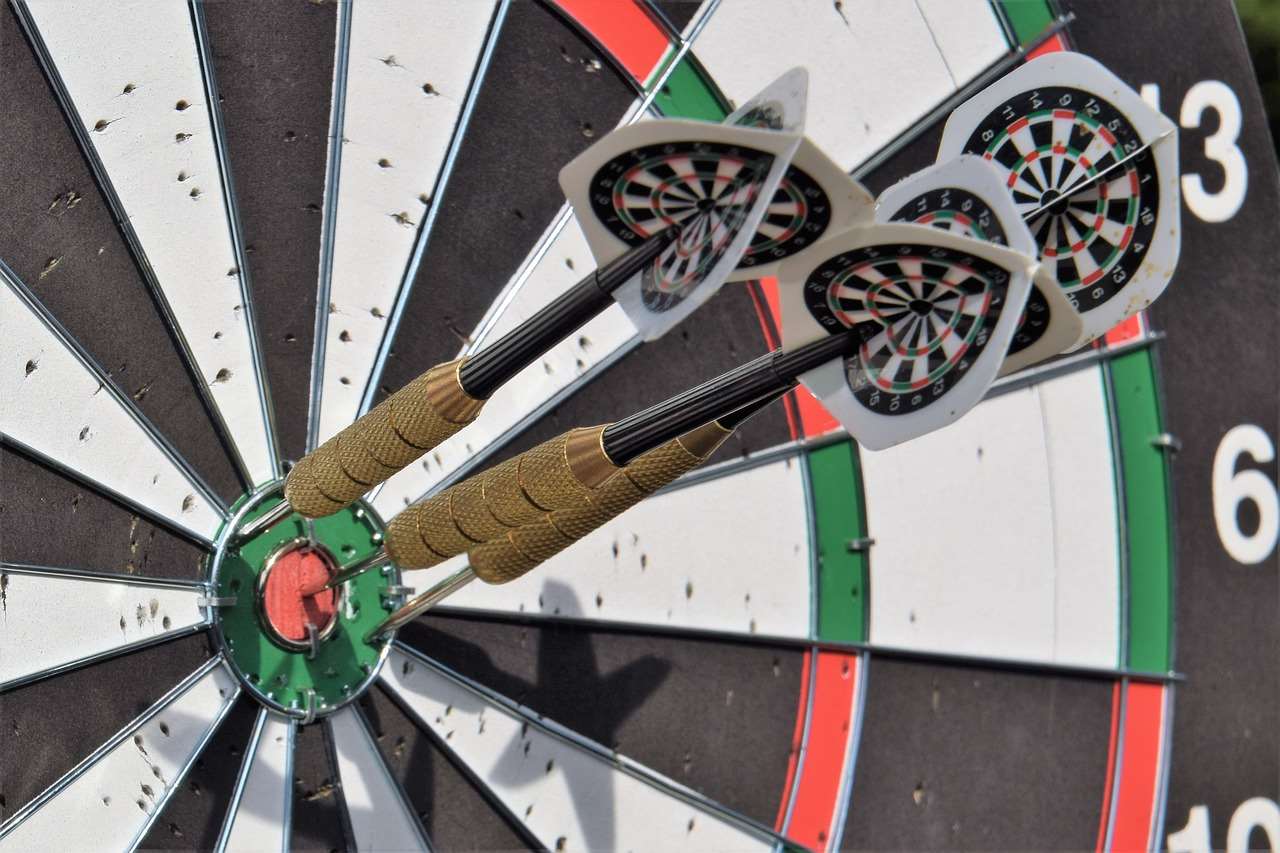Understanding the nuances of **English Cricket league play rules** is essential for both players and spectators to fully appreciate the game; fundamentally, it involves strategically targeting specific numbers on the dartboard to ‘open’ them and then ‘score runs’ while preventing your opponent from doing the same. This article delves into the comprehensive **rules of English Cricket darts**, covering everything from setup and scoring to strategic considerations and variations, ensuring you have a complete grasp of this captivating darts variant.
⚠️ Still Using Pen & Paper (Of een schoolbord)?! ⚠️
Stap in de toekomst! De Dart Teller -app behandelt alle scoren, stelt kassa voor, en volgt uw statistieken automatisch. It's easier than you think!
Probeer de Smart Dart Teller -app gratis!Klaar voor een upgrade? Klik hierboven!
Decoding English Cricket League Play Rules: A Comprehensive Guide
The beauty of English Cricket darts rules lies in its blend of precision and strategy. Unlike simpler dart games, Cricket demands a tactical approach to both offense and defense. Mastering these rules of play is crucial for success, whether you’re participating in a casual game with friends or competing in a more structured league setting.

Setting Up the Game: Essential Preparations
Before you can start playing Cricket, you need to ensure the game is properly set up. This involves the following key steps:
- The Dartboard: A standard dartboard is required, with clearly defined numbers and scoring segments.
- Player Order: Determine the order of play, typically through a ‘diddle for the middle’ (each player throws one dart at the bullseye, the closest goes first).
- Marking the Scoreboard: Designate someone to keep score, or use a dedicated scoring app. The scoreboard should list each player’s name and have space to track their progress on each number.
Proper setup is paramount to ensuring a fair and enjoyable match. A slightly skewed dartboard, bijvoorbeeld, can inadvertently favor one player over another. Be sure to take your time and follow the steps outlined above.
Target Numbers: The Foundation of the Game
In English Cricket darts rules, you don’t simply aim for any number on the board. In plaats van, specific target numbers are used. The standard numbers in Cricket are:
- 20, 19, 18, 17, 16, 15
- The Bullseye (both the outer and inner bull count)
These numbers become the focus of the game. Each player aims to “open” these numbers by hitting them three times (or a combination of singles, doubles, and triples that add up to three hits). Only after a number is “opened” can a player score points on it. If a player hits a number they haven’t opened yet, those hits simply count toward opening the number; they don’t score points.
Understanding the English Cricket Scoring System
The scoring system in **English Cricket** can seem a bit complex at first, but it becomes intuitive with practice. Let’s break down the key elements:
- Opening a Number: As mentioned, you need three hits on a target number to open it. These hits can be achieved through any combination of singles, doubles, or triples. Bijvoorbeeld, one triple counts as three hits, a double counts as two, and a single counts as one.
- Scoring Runs: Once you’ve opened a number, any further hits on that number will score points (of “runs”) for you. A single hit scores one run, a double scores two runs, and a triple scores three runs.
- Closing a Number: A number can be “closed” by either yourself *or* your opponent. If you’ve opened a number, your opponent can prevent you from scoring further runs on it by hitting it three times themselves, thereby closing it for everyone. You can also close a number yourself by hitting it enough times after opening it. Once a number is closed, no one can score runs on it for the remainder of the game.
- The Importance of Strategy: The scoring system encourages strategic play. You need to balance opening numbers to score points with closing numbers to prevent your opponent from scoring.
Begrip how to score runs in English Cricket darts is vital for planning your game effectively. You always want to prioritize opening numbers that you are confident in hitting, while simultaneously keeping an eye on what your opponent is targeting.

Strategic Considerations in English Cricket Play Rules
Beyond the basic rules, a deeper understanding of strategy can greatly enhance your performance in **English Cricket**. Here are some crucial strategic elements to consider:
- Choosing Your Targets: Select target numbers based on your strengths. If you consistently hit the 20, prioritize opening that number early.
- Defensive Play: Don’t neglect defense. If your opponent is racking up points on a particular number, consider closing it to limit their scoring opportunities. This is an especially effective strategy if your opponent is significantly better than you, or if they are close to winning.
- Reading Your Opponent: Pay attention to which numbers your opponent is targeting and adjust your strategy accordingly. Try to anticipate their next move and counter it. Are they a strong scorer on 19? Focus on closing that number down quickly.
- Knowing When to Score: There are times when scoring runs is more important than opening a new number, and vice versa. If you are ahead and your opponent is struggling, you can focus on defense. If you are behind, you need to take risks to catch up.
Mastering these strategic elements is what separates good Cricket players from great ones. It involves a continuous assessment of the game situation and making calculated decisions to maximize your chances of winning.
Taking Wickets: The Art of Defense in English Cricket Darts
While scoring runs is crucial, taking wickets (closing numbers) is equally important in English Cricket league play rules. A well-timed defensive play can completely shift the momentum of a game. Here’s how to effectively take wickets:
- Identify Threat Numbers: Observe which numbers your opponent is consistently hitting. These are the numbers you need to prioritize closing.
- Aggressive Defense: Don’t wait until your opponent has a significant lead on a number before attempting to close it. Be proactive in your defense.
- Strategic Placement: Even if you can’t close a number completely in one turn, placing your darts strategically can make it more difficult for your opponent to score. Bijvoorbeeld, if they only need one more hit to open a number, aim to block the easy shots (the single segment).
Taking wickets in English Cricket darts is not just about stopping your opponent from scoring; it’s also about disrupting their rhythm and forcing them to adjust their strategy. A well-executed defensive play can demoralize your opponent and give you a psychological advantage.
Variations on Standard English Cricket Rules
While the fundamental English Cricket play rules remain consistent, some variations exist depending on the league or the preferences of the players. Understanding these variations can prepare you for different playing environments.
- Cut-Throat Cricket: In deze variatie, instead of scoring runs for yourself, you add them to your opponent’s score if you hit an open number after you have opened it. The goal is to have the *lowest* score at the end of the game.
- Cricket Count-Up: This variation involves scoring runs on any number, not just the designated Cricket numbers. It’s a faster-paced game that relies less on strategic closing and more on pure scoring ability.
- Modified Target Numbers: Some variations may use a different set of target numbers, depending on the skill level of the players. Bijvoorbeeld, beginners might use the 20, 19, and bullseye only.
It’s always a good idea to clarify which variation of Cricket you’ll be playing before the game begins to avoid any confusion or disagreements. Be open to trying different variations to enhance your overall skill and adaptability as a darts player. You can also look at more Darts varianten leuke spellen.
Common Mistakes to Avoid in English Cricket Darts
Even experienced players can fall victim to common mistakes that can cost them the game. Here are some pitfalls to avoid when playing **English Cricket league play rules**:
- Ignoring Defense: Focusing solely on scoring runs without paying attention to your opponent’s progress is a recipe for disaster.
- Chasing Low-Percentage Shots: Attempting difficult shots (like triples) when you’re not consistently accurate can lead to wasted darts.
- Failing to Adapt: Sticking to the same strategy regardless of the game situation can make you predictable and vulnerable.
- Underestimating Your Opponent: Never underestimate your opponent, regardless of their skill level. Complacency can lead to careless mistakes.
By being aware of these common mistakes and actively working to avoid them, you can significantly improve your consistency and decision-making in Cricket.

Tips for Improving Your English Cricket Game
Want to elevate your **English Cricket** skills? Here are some practical tips to help you improve your game:
- Practice Consistently: Regular practice is essential for developing accuracy and consistency.
- Focus on Specific Numbers: Dedicate practice sessions to focusing on specific target numbers to improve your precision.
- Analyze Your Performance: Track your results and identify areas where you need to improve.
- Watch and Learn: Observe experienced players and learn from their techniques and strategies.
- Experiment with Different Dart Setups: Find a dart setup that suits your throwing style and grip.
Herinneren, improvement in darts is a journey, not a destination. Be patient, persistent, and always strive to learn and adapt.
Resources for English Cricket Darts Players
To further enhance your knowledge and skills in **English Cricket**, consider exploring these resources:
- Online Dart Forums: Engage with other darts enthusiasts and exchange tips and strategies.
- Dart Coaching: Consider seeking guidance from a qualified darts coach.
- Dart Leagues: Join a local dart league to gain competitive experience.
- Dart Tournaments: Participate in dart tournaments to test your skills against other players.
The darts community is a welcoming and supportive environment. Don’t hesitate to connect with other players and learn from their experiences.

Conclusie: Mastering the Art of English Cricket Darts
Understanding and mastering the **English Cricket league play rules** is a rewarding endeavor. This guide has covered the essential aspects of the game, from setup and scoring to strategic considerations and variations. Remember that practice, strategie, and adaptability are key to success in Cricket. Whether you are a beginner or a seasoned player, there is always room for improvement. Now that you’re equipped with this knowledge, grab your darts and start playing! Consider joining a local league to further enhance your skills and enjoy the camaraderie of the darts community.
Hoi, Ik ben Dieter, En ik heb Dartcounter gemaakt (Dartcounterapp.com). Mijn motivatie was geen darts -expert - helemaal tegenovergestelde! Toen ik voor het eerst begon te spelen, Ik hield van het spel, maar vond het moeilijk en afleidend om nauwkeurige scores te houden en statistieken te volgen.
Ik dacht dat ik niet de enige kon zijn die hiermee worstelde. Dus, Ik besloot om een oplossing te bouwen: een eenvoudig te gebruiken applicatie die iedereen, Ongeacht hun ervaringsniveau, zou kunnen gebruiken om moeiteloos te scoren.
Mijn doel voor Dartcounter was eenvoudig: Laat de app de nummers afhandelen - het scoren, de gemiddelden, de statistieken, Zelfs checkout suggesties - zodat spelers puur kunnen richten op hun worp en genieten van het spel. Het begon als een manier om het probleem van mijn eigen beginners op te lossen, En ik ben heel blij dat het is uitgegroeid tot een nuttig hulpmiddel voor de bredere darts -community.